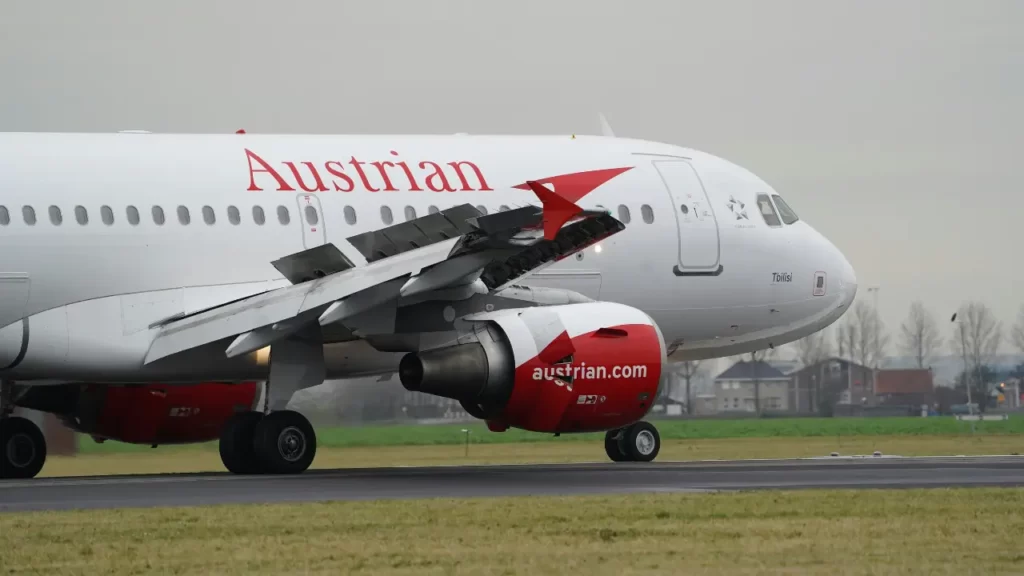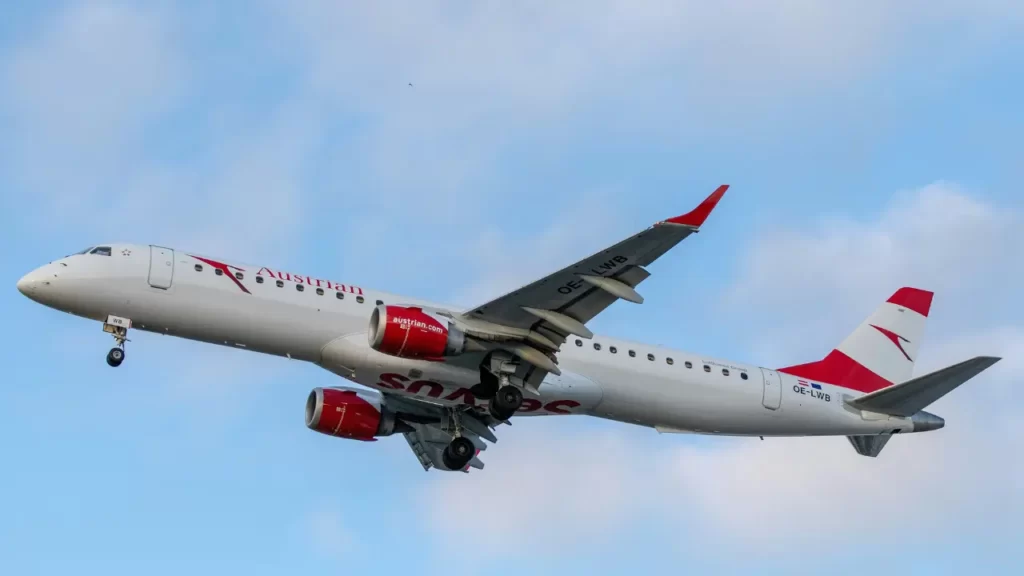
Austrian Airlines Overview
Austrian Airlines, headquartered in Vienna, is the flag transporter of Austria and a subsidiary of the Lufthansa Group. Here’s an overview of Austrian Airlines,
Table of Contents
Foundation and Early Years (1957)
- Austrian Airlines was founded on September 30, 1957, and commenced processes on March 31, 1958. The airline initially focused on providing domestic and European flights.
Hub and Network
- The primary hub of Austrian Airlines is Vienna International Airport (VIE). The airline has a strong presence in Central and Eastern Europe and offers a complete network of domestic, European, and international flights.
Fleet
- Austrian Airlines operates a contemporary fleet, consisting of a mix of narrow-body and wide-body aircraft. The fleet includes Airbus A320 family, Boeing 767, and Embraer E195 aircraft, among others.
Cabin Classes
- Austrian Airlines offers various cabin classes, including Economy Class, Premium Economy Class (on long-haul routes), and Business Class. The airline is known for providing quality service and comfortable cabins.
Star Alliance Membership
- Austrian Airlines is a member of the Star Alliance, one of the three major global airline alliances. This membership provides passengers with access to an extensive network of destinations and seamless connections when traveling with other member airlines.
In-Flight Services
- The airline focuses on providing customers with a high level of in-flight service. This includes in-flight entertainment, meals, and a selection of brews. Business Class passengers enjoy additional amenities and a premium travel experience.
Austrian Miles & More Loyalty Program
- Austrian Airlines operates a frequent-flyer program called Miles & More. Passengers can earn miles for flights and various activities, redeemable for rewards such as flights, upgrades, and other benefits.
Vienna as a Transfer Hub
- Vienna International Airport helps as an essential transfer hub for Austrian Airlines, connecting passengers traveling amid Eastern and Western Europe, as well as to other international destinations.
Fleet Modernization
- Austrian Airlines has focused on fleet modernization, incorporating newer and more fuel-efficient aircraft to enhance operational efficiency and reduce environmental impact.
Environmental Initiatives
- Like many airlines, Austrian Airlines has implemented measures to address environmental concerns. This includes efforts to reduce carbon emissions and explore sustainable aviation practices.
COVID-19 Pandemic Response
- Austrian Airlines, like other carriers, faced challenges during the COVID-19 pandemic. The airline implemented safety measures, adjusted its flight schedules, and introduced health protocols to ensure passenger and staff safety.
Part of the Lufthansa Group
- Austrian Airlines is a member of the Lufthansa Group, a major aviation conglomerate. This affiliation allows for collaboration with other group airlines, sharing of resources, and coordinated efforts to strengthen the overall network.
Austrian Airlines History

Founding and Early Years (1957-1960s)
- Austrian Airlines, or Österreichische Luftverkehrs AG, was founded on September 30, 1957. Operations commenced on March 31, 1958. Initially, the airline focused on domestic and European routes using Vickers Viscount and Douglas DC-6 aircraft.
Jet Age and International Expansion (the 1970s)
- In the 1970s, Austrian Airlines entered the jet age with the introduction of jet aircraft like the Douglas DC-9. The airline expanded its international network, connecting Vienna with cities in Europe, the Middle East, and North America.
Fleet Modernization (1980s)
- Austrian Airlines continued to modernize its fleet with the introduction of more advanced and fuel-efficient aircraft. The McDonnell Douglas MD-80 and Fokker F70 were among the models added to the fleet during this period.
Privatization (1992)
- In 1992, the Austrian government initiated the privatization of Austrian Airlines. The process involved the sale of shares to private investors, marking a transition from state ownership to a partially privatized structure.
Star Alliance Membership (2000)
- Austrian Airlines became a member of the Star Alliance in 2000, joining a global network of airlines that cooperate on various levels, including code-sharing and shared facilities. This alliance membership strengthened Austrian Airlines’ international presence.
Fleet Expansion and New Routes (2000s)
- Austrian Airlines expanded its fleet and introduced new routes to destinations worldwide. The airline embraced modern aircraft, including the Airbus A320 family and Boeing 777, to enhance efficiency and passenger comfort.
Lufthansa Group Acquisition (2009)
- In 2009, the Lufthansa Group acquired the majority of stocks in Austrian Airlines, making it a subsidiary of the German aviation conglomerate. The acquisition aimed to strengthen synergies within the Lufthansa Group.
Integration into the Lufthansa Group (2010s)
- Austrian Airlines continued to function as part of the Lufthansa Group, benefiting from shared resources and cooperative efforts with other group airlines like Lufthansa and Swiss International Air Lines.
Fleet Modernization with Embraer and Boeing Aircraft (2010s)
- The airline introduced modern and fuel-efficient aircraft to its fleet, including Embraer E-Jets for regional flights and Boeing 777 for long-haul operations, contributing to environmental sustainability and operational efficiency.
Focus on Vienna as a Hub (2010s)
- Vienna International Airport (VIE) has been a key hub for Austrian Airlines. The airline strategically utilized Vienna’s geographic location to connect Eastern and Western Europe, making it a crucial transfer point for passengers.
COVID-19 Pandemic Response (2020s)
- Austrian Airlines faced challenges during the COVID-19 pandemic, leading to adjustments in flight schedules, health protocols, and cost-saving measures to navigate the impact on the aviation industry.
Environmental Initiatives and Sustainable Aviation (2021 Onward)
Austrian Airlines, like many airlines, has expressed a commitment to sustainability. The airline is likely to travel and implement initiatives to reduce its environmental footprint, such as the use of sustainable aviation fuels and other eco-friendly performs.
Austrian Airlines has played a vital role in connecting Austria with the global aviation network. Through its history, the airline has adapted to industry changes, embraced new technologies, and contributed to the growth of Vienna as a significant international aviation hub. Please note that developments may have occurred since my last update.
